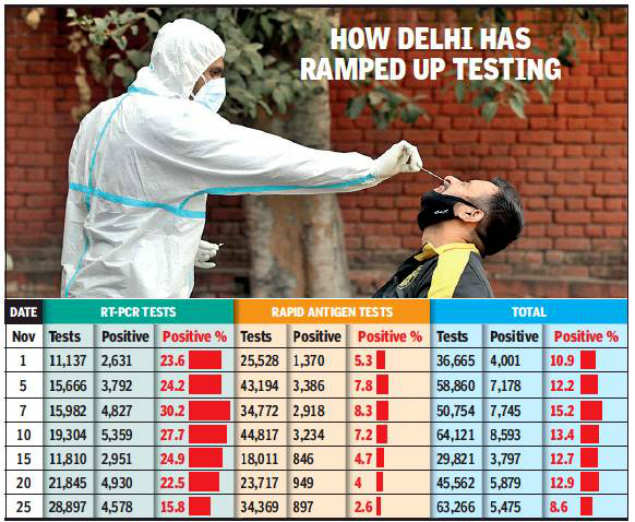

Delhi has been recording fewer than 7,000 new cases for a week and on Friday 5,482 new cases were reported from 64,455 tests, including 28,100 RT-PCR, in the past 24 hours, with a positivity rate of 8.5%. On Friday morning, Jain said that the positivity rate in the previous two days had been below 9% even though a large number of tests had been done.
On Thursday, the Delhi government had told the high court that it would soon take a call to impose the night curfew, which had been allowed in the latest central guidelines on November 25. The Center told the court that these guidelines allowed Union states and territories to impose local restrictions, including night curfews, based on their assessment of the Covid situation on the ground, especially in containment zones.
“We are monitoring all aspects and the actions to be taken will be based on that. We are also monitoring the trend of the positivity rate, which is difficult to analyze in one day but for two days, it has been less than 9%,”, Jain said on Friday. The government is monitoring whether the positivity rate continues to decline, stagnate or retreat, he added.
The minister said that compared to the peak of 15.2% on November 7, the positivity rate had steadily decreased. “Not only the overall positivity rate, but even the positivity rate for RT-PCR tests has dropped from 30% on November 7 to 15.8% now. The positivity rate for rapid antigen tests has also dropped. down from 8.3% on November 7 to 2.6% now, which is a third, “he said.
Jain said the Covid tests in Delhi were four times compared to those carried out in other parts of the country. He said that the RT-PCR tests had already reached a saturation point and that people had to wait more than a day for results due to the large number of tests.
“We conducted a door-to-door survey of 57 lakh people, of which around 13,000 suspects had come, but only 1,100-1,200 tested positive. So it seems that the positivity rate is dropping in Delhi,” he said. “In the past seven days, fewer than 7,000 cases have come in every day, which is also a positive indicator,” Jain said.
.